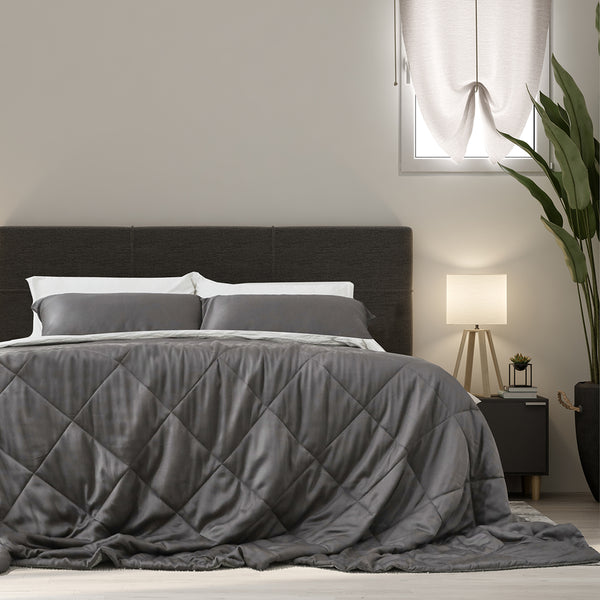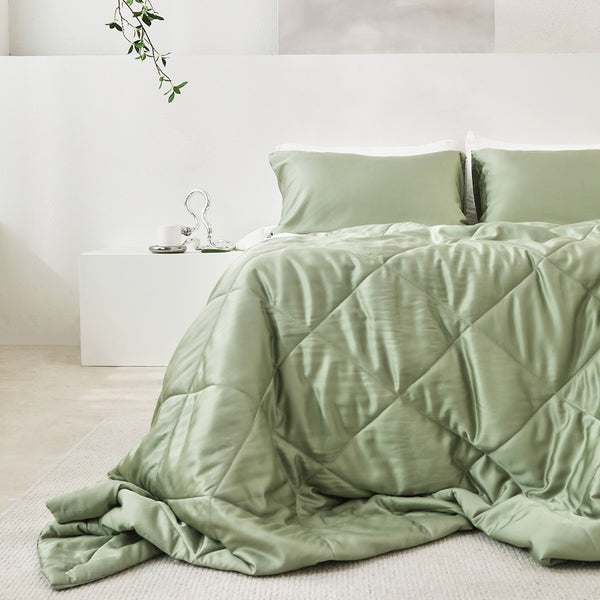In the quest for a good night's sleep, understanding the differences between hypersomnia and insomnia becomes crucial. These two sleep disorders sit at opposite ends of the sleep spectrum, affecting millions worldwide.
While insomnia is the infamous thief of sleep, leaving individuals longing for just a few more hours of rest, hypersomnia is its lesser-known counterpart, characterized by excessive daytime sleepiness despite adequate or prolonged nighttime sleep.
This article delves into the core of the hypersomnia vs insomnia debate, exploring their causes, impacts, and potential remedies.
The Distinct Worlds of Hypersomnia vs Insomnia
Insomnia is a sleep disorder that makes it difficult to fall asleep or stay asleep or causes early morning awakenings. It can lead to daytime fatigue, mood disturbances, and decreased performance in daily activities. Insomnia can be acute, lasting for days or weeks, or chronic, persisting for months or even longer.
Hypersomnia, conversely, is characterized by excessive sleepiness that isn't relieved by napping or prolonged sleep. Individuals may struggle to wake up in the morning and find it challenging to stay awake during the day, impacting their work, social life, and overall quality of life.
Tracing the Roots: Causes and Effects
Exploring the underpinnings of sleep disturbances such as insomnia and hypersomnia unveils a complex landscape of causative factors and their profound repercussions on individuals' mental and physical well-being.
Insomnia, the pervasive difficulty in initiating or maintaining sleep, often stems from an intricate mix of psychological stressors, including anxiety and depression, alongside lifestyle-related habits such as poor sleep routines and the influence of physical health conditions.
These triggers interweave, creating a scenario where the mind finds it challenging to relax into the restorative phase of sleep.
On the flip side, hypersomnia, characterized by excessive daytime sleepiness and prolonged nocturnal sleep, can be attributed to a range of underlying conditions, from primary sleep disorders like narcolepsy and obstructive sleep apnea to neurological illnesses, the side effects of medication and the misuse of substances.
The consequences of both sleep disorders extend beyond mere tiredness, significantly impacting mental health. A vicious cycle often ensues, where the presence of sleep disorders exacerbates mental health issues, thereby further deteriorating sleep quality.
This reciprocal relationship underscores the importance of addressing sleep disturbances as isolated conditions and integral components of overall health and well-being.
The Path to a Restful Night: Solutions and Strategies
Treating these sleep disorders requires a multifaceted approach, including lifestyle changes, therapy, and sometimes medication. Establishing a regular sleep schedule, creating a restful environment, and possibly cognitive-behavioral therapy (CBT) are recommended strategies for insomnia.
For hypersomnia, treatment may involve addressing the underlying condition, practicing good sleep hygiene, and, in some cases, prescribed stimulants.
Incorporating products that enhance sleep quality can also be a game-changer. Here, the Zonli Z-Magic Cooling Comforter shines as a versatile solution, especially for those whose sleep disorders are exacerbated by discomfort due to temperature regulation issues.
Its innovative design, featuring one side made of 100% bamboo viscose and the other of polyethylene fabric, offers a cooling effect that can be particularly beneficial for individuals dealing with insomnia.
The comforter's ability to maintain a comfortable body temperature can ease the struggle to fall and stay asleep, offering a softer, cooler embrace that invites restfulness.
Moreover, the Zonli Z-Magic Cooling Comforter's versatility extends beyond just sleeping. Its soothing color and comfortable texture make it ideal for wrapping around your shoulders during relaxing activities or laying across your lap.
It provides a sense of calm and relaxation that can help mitigate the daytime effects of both hypersomnia and insomnia.
Hypersomnia vs Insomnia: Things You Should Know
How can I tell if I have hypersomnia or insomnia?
The differentiation between hypersomnia and insomnia hinges on distinct symptoms and impacts on daily life. Insomnia manifests through difficulty falling asleep, maintaining sleep, or experiencing premature awakenings, often leading to daytime fatigue and impaired functioning.
In contrast, hypersomnia is characterized by overwhelming daytime sleepiness despite sufficient or extended nocturnal sleep, compelling individuals to nap excessively, sometimes at inopportune moments.
Diagnosing these conditions requires a detailed examination of one's sleep habits and medical history, supplemented by sleep studies in some instances. These evaluations help identify the specific disorder, thereby facilitating targeted interventions.
Can lifestyle changes improve sleep disorders?
Lifestyle modifications play a critical role in the management of sleep disorders. A consistent sleep routine helps synchronize the body's internal clock, enhancing sleep quality and duration.
Similarly, optimizing the sleep environment—through measures such as ensuring a comfortable mattress and pillow, maintaining a cool room temperature, and minimizing noise and light exposure—can significantly improve sleep onset and continuity. Regular physical activity in one's daily routine promotes faster sleep onset and deeper sleep cycles.
Moreover, dietary adjustments, particularly avoiding stimulants like caffeine and heavy meals close to bedtime, can prevent disruptions in sleep patterns. These lifestyle changes, when implemented consistently, can markedly improve symptoms of both hypersomnia and insomnia.
How does the Zonli Z-Magic Cooling Comforter aid in managing sleep disorders?

The Zonli Z-Magic Cooling Comforter aids in managing sleep disorders by addressing one of the critical factors for restful sleep: body temperature. Its innovative design, bamboo viscose, and polyethylene fabric, helps regulate temperature, keeping you cool and comfortable throughout the night.
It can be beneficial for individuals with insomnia, who may find it difficult to sleep due to overheating, or those with hypersomnia, who may benefit from a more regulated sleep environment to improve sleep quality.
How does stress affect hypersomnia and insomnia?
Stress is a prevalent trigger for sleep disturbances, exacerbating both hypersomnia and insomnia. The activation of the body's stress response heightens alertness and can hinder the ability to relax, fall asleep, or maintain sleep throughout the night.
Effective stress management techniques, including relaxation exercises, mindfulness practices, and therapy, can mitigate the impact of stress on sleep.
Additionally, creating a calming bedtime routine and environment, possibly with comfort aids like the Zonli Z-Magic Cooling Comforter, can further promote relaxation and improve sleep quality. Such measures aid in stress reduction and enhance the overall sleep experience, addressing the root causes of sleep disturbances.
Are there any medical treatments for hypersomnia or insomnia?
The medical management of hypersomnia and insomnia varies widely based on the underlying causes and the severity of the disorder. Treatment options can range from prescription sleep aids and antidepressants to medications aimed at regulating the sleep-wake cycle.
It's imperative to consult with a healthcare professional to obtain an accurate diagnosis and a treatment plan tailored to one’s specific needs. This professional guidance ensures that the chosen treatment addresses the sleep disorder effectively while considering any underlying conditions or factors contributing to the sleep disturbances.
When should I seek professional help for my sleep disorder?
If you've tried lifestyle changes, environmental adjustments, and relaxation techniques without significant improvement, or if your sleep disorder affects your daily life, it's essential to seek professional help.
A healthcare provider can thoroughly evaluate any underlying conditions contributing to the sleep disorder and recommend appropriate treatment options. Early intervention can prevent further complications and improve your quality of life.
Conclusion
Understanding the nuances of hypersomnia vs insomnia is the first step toward achieving better sleep and, by extension, improving overall health and well-being.
While these conditions present unique challenges, innovative solutions like the Zonli Z-Magic Cooling Comforter, combined with lifestyle adjustments and professional guidance, can offer relief and pave the way for more restful nights.
As we navigate the complexities of sleep disorders, a supportive, comfortable sleep environment remains a constant ally in the quest for quality sleep.


